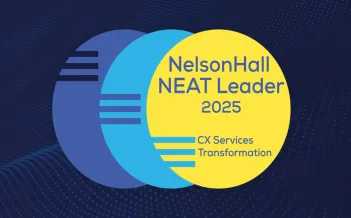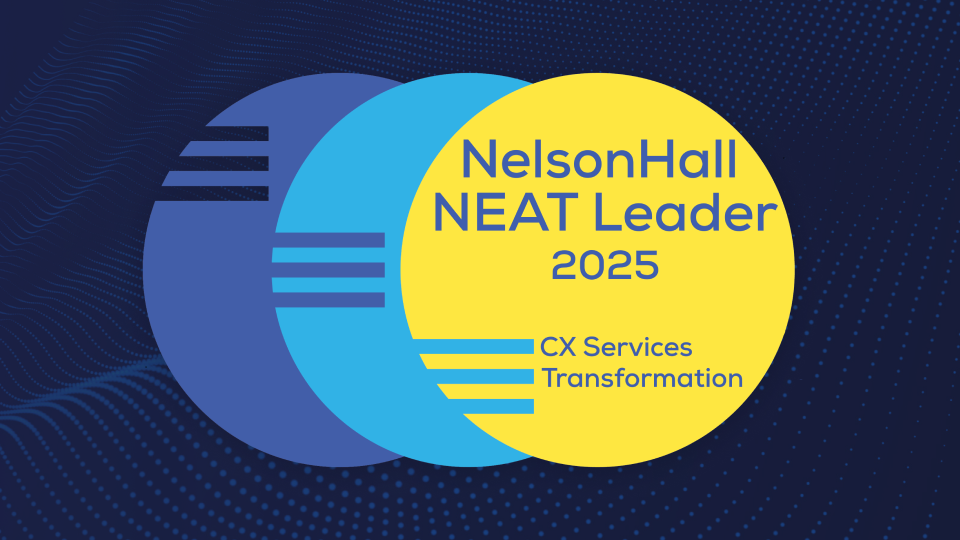If you came to CCW Las Vegas 2025 expecting glitz, glam, and generative AI buzzwords, you weren’t disappointed. But what truly stood out beneath the bright lights and big tech demos? A surprisingly grounded, deeply human truth:
AI might be the new frontier of CX—but people still define its purpose. Human intentions and oversight will ultimately shape it.In a city where stakes are always high and the odds are ever-changing, this year’s summit was clear: Agentic AI is here. But trust, empathy, and intentionality? Those are the real power plays. What matters now is how we embed AI meaningfully into our business - in ways that address real-world complexity while keeping human needs at the center.
Let’s break down the big themes that left CX leaders rethinking everything—from contact centers to co-pilots.
Here are the key themes that stood out:
- Rolling the Dice on AI Agents – Hype is real and so is uncertainty!
- High Stakes, Higher Standards - Rethinking CX in a Demanding Era
- Playing the Human Card
- Don’t Get Bluffed by Buzzwords
Let’s unpack these themes and explore what they really mean for the future of CX:
Rolling the Dice on AI Agents – Hype is real and so is uncertainty!
There’s a mix of excitement and apprehension in the air. On one hand, agentic and generative AI promise to revolutionize how we engage with customers. On the other, they introduce a wave of uncertainty - not just about technology, but about what customers really want, and how far they’re willing to go with AI-led experiences.
Today’s customers expect seamless, intuitive support, but still want the option to speak with a human - especially when situations are emotional or complex. Businesses, meanwhile, are under pressure to cut costs, drive innovation, and maintain human-centered experiences. Striking that balance is not easy.
Here are key ideas that emerged and that organizations must internalize to stay ahead:
Contextual intelligence with a focus on outcomes - It’s not enough for AI to handle routine tasks in silos. We need to design integrated processes where Agentic AI can appease customers and ‘empathetically resolve a request for a refund on a test already taken’ or fairly ‘compensate for a missed newspaper delivery in stormy weather’.
The experience needs to be easier/better/faster. Technology to left shift operations, form an integrated office, and build intelligence into the products
Embrace AI-First Design and Iteration: Shift to an AI-First approach in designing customer journeys, embedding intelligence at every step. Uncertainty isn’t a risk - it’s a design input. Leaders need to test early, fail fast, and iterate often
Resilient AI systems are built through experimentation, not perfection
Figure-out together = domain experts + tech partners: Everyone is still learning, no one has it all figured out. Organizations bring the data and business context; domain experts break down existing processes and reimagine them into modular components; and technology partners enable scale, speed, and best-in-class execution.
Stronger together isn’t just a slogan - it’s a strategy
CX is no longer a contact center strategy. It’s a frontline driver of business transformation. The rise of agentic AI marks a turning point in how companies will connect, serve, and build trust with their customers.
High Stakes, Higher Standards - Rethinking CX in a Demanding Era
Customer expectations are rising fast. It's no longer sufficient to respond to issues - organizations must design proactive, predictive journeys that anticipate needs and resolve issues before they surface.
With the right data strategy and a mindset shift, CX can move from being reactive to becoming a true competitive advantage.
Here are four shifts that define this new CX reality:
From Reactive to Proactive
Waiting for customers to raise issues is no longer acceptable. Brands need to anticipate needs and address problems before they surface. Whether it's a delayed package, a failed payment, or a service interruption - the best experiences are invisible.
Proactive journey is what will delight the customer–but do not intrude
From Data-Rich to Insight-Driven
Brands sit on mountains of data - but few use it effectively. The shift is toward real-time, context-aware experiences, driven by integrated data across channels, products, and systems.
Customers don’t care how your systems are structured. They expect seamless, personalized responses.
From never-ending optimization to Journey Design
It’s not enough to improve steps in isolation or fix things with duct tape. Leading brands are redesigning full customer journeys, aligning experience with intent, emotion, and outcome across digital and human touchpoints.
Every moment matters—and every gap creates churn risk.
From effort to impact
Customers today want relevance, clarity, and resolution—all delivered at speed. Traditional operating models struggle to meet these expectations at scale. This is where technology arbitrage becomes critical: the strategic use of emerging technologies to gain disproportionate advantages in efficiency, cost, and adaptability.
Technology arbitrage is the new frontier
This isn’t just a technological shift - it’s a philosophical shift from treating support as a cost center in a reactive set-up to viewing it as a relationship engine. And it’s driving results: faster resolutions, deeper loyalty, and increased lifetime value.
Playing the Human Card
AI is transforming CX, but it’s not here to replace people—it’s here to empower them. The most effective transformation stories shared at CCW focused on empowering people with AI, not displacing them. Across industries, leaders are reimagining human-AI collaboration to balance automation with empathy and context.
As Marriott’s Frid Edmund put it: “Take care of your people, and they’ll take care of you.” Human-centric processes, empathetic design, and agent enablement are now core pillars of great CX. The future lies in collaborative intelligence - where humans and machines work in tandem.
Here are five key shifts defining the future:
AI as Co-Pilot, Not Replacement
AI is enhancing, not eliminating, human roles. Agents now have copilots offering real-time prompts, decision support, and knowledge surfacing. Organizations shared that 50% of high-volume, low-complexity calls were contained using AI, freeing agents for more complex needs. Agents need to upskill themselves and AI can design tailored learning pathways with adaptive learning.
Don’t replace—elevate.
Don’t Over-Automate; Future of Work is hybrid
Too much automation creates friction. Customers want speed, but not at the cost of human connection. Just because tech can doesn’t mean it should. Focus on the skills required for every task and the right tech / human interventions needed: who will do the work (Humans, Gig workers or AI agents), how the work will be done (Task allocation between AI Agents | Humans | Human + AI co-pilot), what skills are required (basis each archetype).
Automate with intention, not at the expense of empathy.
Build Trust Through Transparency and Governance
Success with AI depends on internal and external trust. That means designing systems to reduce hallucinations, ensure explainability, and align with brand values. The real winners will be those who design with empathy, empower their teams, and build AI that customers actually trust.
Trust and transparency are non-negotiable.
Voice Is Back - and Smarter Than Ever
The voice isn’t fading. It’s growing, especially among Gen Z. But IVRs must evolve from rigid scripts to AI-powered, persona-driven voice-bots. There needs to be a personality - Think “sassy” vs. “formal” IVRs based on the personas.
Voice is staying. Make it human, fast, and branded.
Emotions drive customer decisions. Orchestrating customer journeys to leverage both AI and human ingenuity will set brands apart.
Don’t Get Bluffed by Buzzwords
Amid the AI buzz, a clear reminder emerged: Don’t chase AI for its own sake. Success lies in solving real customer problems with disciplined execution, from selecting the right use cases to ensuring strong data foundations and continuous learning.
AI is powerful, but its impact depends on intentional design, governance, and a relentless focus on customer value.
The best CX leaders are not rushing into flashy tools or vague promises—they’re asking smarter questions:
- Do we want to fix the gaps or reimagine the process?
- What real customer pain points are we solving?
- Do we have the data, governance, and change management to make this stick?
Here are four approaches that are required to unmask the AI that Actually Matters
Lead with Use Cases, Not Tech
Organizations that begin with real, high-impact customer problems and validate them are the ones seeing true ROI from AI. Anchor your strategy in customer insight, enrich with domain expertise, and layer technology to add value and amplify the outcomes.
Customers are not won with tech but by solving their problems with minimal interactions.
Fix Your Foundations First: Data, Talent, Governance
Many AI failures stem from poor data hygiene, lack of change management, or inadequate training. In almost every transformation story, the ability to connect and contextualize customer data, across regions, touchpoints, and systems, emerged as the foundation for proactive design, intelligent routing, and personalized service.
AI success starts behind the scenes – the mindset, the data and trained people make the magic possible.
Dual Track = Double Win: Internal + Customer-Facing AI
The best strategies build AI both for internal ops (agent assist, workflows) and for customers (smart bots, IVRs). The two are interconnected.
Empower your team and your customers—progress comes from both ends.
Final Takeaway: AI is here, and CX stands at a crossroads — Intentional Design Will Define the Winners
CCW Las Vegas 2025 made it clear: we’re not just witnessing an evolution in customer experience, we’re standing at the edge of a reinvention. AI isn’t a tool to bolt on; it’s a strategic lever to rethink how brands connect with customers, solve problems, and build lasting relationships. But with rising customer expectations and increasing technological complexity, success will hinge on intentionality—in design, governance, and human enablement.
The winners in this new CX era won’t be the ones who chase trends, but those who act with clarity. Clarity in use cases. Clarity in how AI augments humans, not replaces them. And clarity in how trust, empathy, and simplicity remain at the heart of every experience. The hype is real—but so is the responsibility. Now is the time to build CX that is not only intelligent, but also deeply human.










